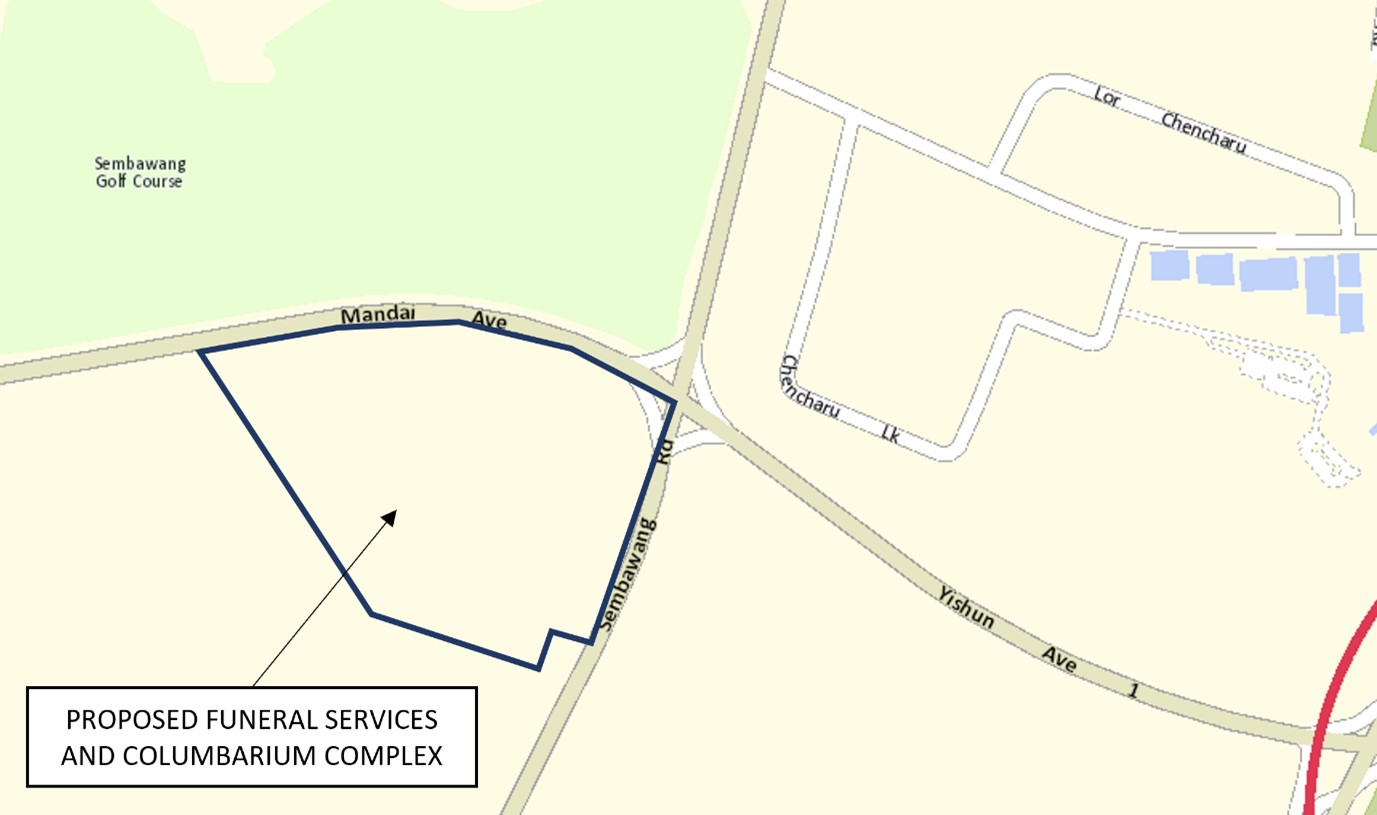As Singapore’s population continues to rise, so does the number of deaths in the country.
Given the limited land space available, the government is actively seeking a solution to address this issue by considering the construction of a new columbarium.
In response to the expected surge in demand for after-death facilities, a new funeral services and columbarium complex is now being planned near the existing Mandai Columbarium.
On 18 December 2023, the National Environment Agency (NEA) announced the identification of a site for this new complex.

The chosen location for the project is at the intersection of Mandai Avenue and Sembawang Road.
Here’s everything you need to know about this upcoming project.
Demand for Wake Spaces Expected to Increase
NEA has observed that the demand for various end-of-life facilities such as wake spaces, columbarium niches, and remains management is expected to rise along with the projected increase in resident deaths.
NEA said: “With the number of resident deaths projected to increase, demand for wake spaces, columbaria niches, and the management of remains is expected to increase in tandem.”
Singapore currently has three government-operated columbariums in Choa Chu Kang, Yishun, and Mandai.
The Yishun facility is already operating at full capacity, while the Mandai facility is approaching its limit.
The Choa Chu Kang Columbarium, with around 147,000 niches, is currently at 37% of its capacity.
As Singapore’s population continues to age, the annual number of deaths is expected to increase significantly, with projections indicating a doubling from approximately 20,000 deaths in 2016 to 40,000 deaths by 2040, as outlined in NEA’s Integrated Sustainability Report for 2021/2022.
The choice of the Mandai Avenue site, situated adjacent to Nee Soon Camp and opposite the Sembawang Country Club’s golf course, was the result of careful considerations and consultations with relevant agencies.
Various factors played a role in site selection, including the necessary land area for a versatile facility, the development plans for the surrounding area, traffic implications, and the impact on neighbouring developments.
Environmental Impact Assessment and Feasibility Study to be Conducted
Before the development plans are confirmed, a comprehensive environmental impact assessment and feasibility study will be conducted for the proposed project.
This assessment aims to identify potential environmental impacts that may arise during both the construction and post-construction phases.
NEA has outlined its approach, which includes conducting baseline surveys of the local flora and fauna.
Additionally, there will be extensive monitoring of various environmental factors such as water quality, noise levels, and air quality.
Subsequently, mitigation measures will be developed with an environmental monitoring and management plan.
NEA has also mentioned its engagement with representatives from nature groups as part of this process.
“The proposed development plans will take into consideration findings from the detailed EIA and further feedback from nature groups,” NEA stated.
While the total site area spans approximately 10 hectares, NEA clarified to The Straits Times that the final size of the development will be determined based on the outcomes of the EIA and feasibility study.
NEA anticipates that the EIA and feasibility study will take approximately 20 months to complete once an EIA consultant is appointed, as confirmed in response to queries from The Straits Times.
“Given the site context, NEA will also be exploring sensitive design of the development so that it can be integrated with the environment and minimise impact to its surroundings,” NEA said.
NEA reported that it had engaged several nature groups in October, including the Nature Society (Singapore) (NSS), Butterfly Circle, LepakInSG, and Singapore Youth Voices for Biodiversity (SYVB).
Some of these groups have raised concerns regarding the potential loss of native plants, a unique feature of Singapore’s forests, as well as the impact on local wildlife movement.
NSS council member Tony O’Dempsey pointed out that the site is distinctive due to its predominantly native flora, including tembusu and Elaeocarpus trees, as well as some species of conservation significance.
Furthermore, NSS has recent records of pangolins in the area, as well as records of the Malayan porcupine dating back approximately ten years.
NEA acknowledged that, as a small and densely populated city-state, Singapore must address the competing land use needs of both current and future generations.
It emphasised that by providing advance notice, engaging in meticulous planning, and implementing necessary mitigation measures, agencies will try to minimise and mitigate any inconveniences and potential environmental impacts associated with these developments.



